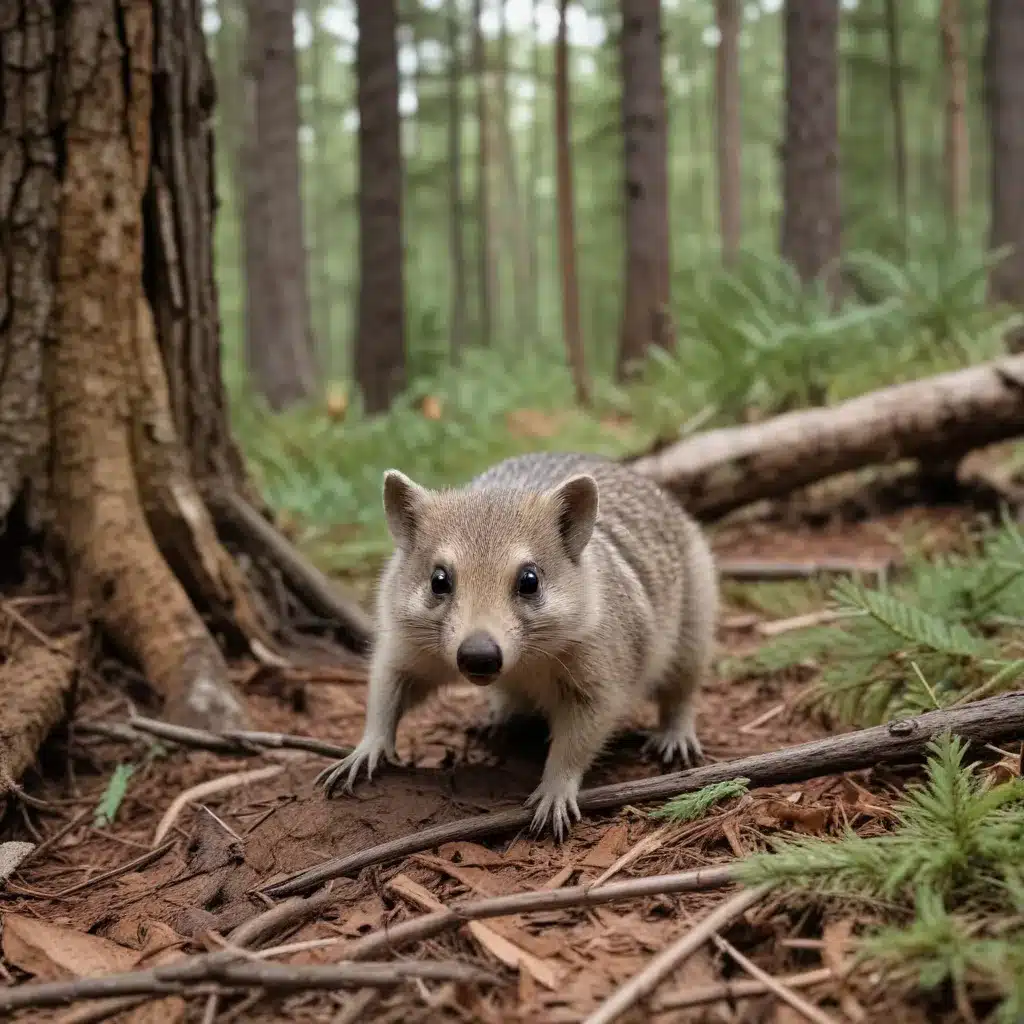
As you wander the nature trails of Crooked Pines Farm, you’ll encounter a bustling world of wildlife. From the quick-footed chipmunks darting between the trees to the scurrying eastern moles tunneling underground, our farm is home to a diverse array of fascinating creatures. Let’s take a closer look at some of the fascinating inhabitants that call Crooked Pines home.
Rodents of Crooked Pines
One of the most common sights on our farm is the cheerful common chipmunk (Tamias striatus). These small, striped rodents are often seen perched on logs or scampering across the ground, their cheek pouches stuffed with nuts and seeds. Chipmunks play an important role in the ecosystem, serving as both predator and prey. They help disperse seeds and fungi through their foraging habits, while also providing food for larger animals like hawks and snakes.
Another familiar resident is the eastern gray squirrel (Sciurus carolinensis). These bushy-tailed creatures can be found leaping from branch to branch, gathering acorns and other nuts to store for the winter. Gray squirrels are excellent problem-solvers and can remember the locations of hundreds of buried caches. Keep an eye out for them performing their amusing antics, such as chasing each other or burying their food.
Less visible but equally fascinating are the southern flying squirrels (Glaucomys volans) that make their homes in the mature forests of Crooked Pines. These remarkable rodents can glide up to 80 feet between trees using the skin-covered membranes between their front and hind limbs. At night, you may catch a glimpse of them soaring effortlessly through the air, searching for nuts, fruits, and insects.
Insectivores of Crooked Pines
Beneath the soil, another group of small mammals thrives: the insectivores. The eastern mole (Scalopus aquaticus) is a common sight, its distinctive mounds and tunnels often visible in our pastures and gardens. These adaptations allow moles to efficiently locate and consume their primary food source: earthworms, grubs, and other soil-dwelling invertebrates. While moles may occasionally damage plant roots, their burrowing helps aerate the soil and improve drainage.
A more elusive resident is the star-nosed mole (Condylura cristata), known for its distinctive, tentacle-like nose. This remarkable adaptation allows the star-nosed mole to navigate and sense its environment with remarkable sensitivity, enabling it to locate and consume prey in the dark, damp soil. Though rarely seen, the presence of star-nosed moles can be detected by their distinctive, conical mounds.
Avian Residents of Crooked Pines
The vibrant forests of Crooked Pines are also home to a diverse array of birds, including several species of woodpeckers. The diminutive downy woodpecker (Dryobates pubescens) is a common sight, its distinctive black-and-white plumage and rapid drumming easily recognizable. Downy woodpeckers play a crucial role in the ecosystem, helping to control insect populations and excavating nest cavities that are later used by other bird species.
Another impressive woodpecker found at Crooked Pines is the pileated woodpecker (Dryocopus pileatus), the largest woodpecker species in North America. These striking, crow-sized birds are known for their impressive, rectangular-shaped holes in tree trunks, which they create while searching for their preferred prey: carpenter ants and wood-boring beetles.
Beyond the woodpeckers, our farm is home to a variety of songbirds, such as the cheerful Carolina wren (Thryothorus ludovicianus) and the curious tufted titmouse (Baeolophus bicolor). These small, energetic birds can often be seen and heard flitting through the underbrush or perched atop branches, filling the air with their melodic calls.
Reptilian Inhabitants of Crooked Pines
The diverse habitats of Crooked Pines also support a variety of reptiles, including several species of snakes and lizards. One of the most commonly encountered snakes is the garter snake (Thamnophis sirtalis), a harmless and beneficial species that helps control populations of small rodents and amphibians. Another snake species found on our farm is the black racer (Coluber constrictor), a swift and agile predator that plays a crucial role in maintaining the balance of our ecosystem.
Among the lizards that call Crooked Pines home, the five-lined skink (Plestiodon fasciatus) and the green anole (Anolis carolinensis) are two of the most frequently sighted. The skinks, with their distinctive blue tails, are often seen basking on rocks or scurrying across the forest floor, while the green anoles use their color-changing abilities to blend in with the surrounding vegetation.
Amphibious Life in Crooked Pines
Our farm’s wetlands and streams are home to a variety of amphibians, including several species of frogs and salamanders. The cheerful spring peeper (Pseudacris crucifer) is a common sight, its high-pitched calls echoing through the woods in the early spring. The larger American bullfrog (Lithobates catesbeianus) can also be heard, its deep, resonant croaks carrying across the ponds and marshes.
Underneath the leaf litter and fallen logs, you may spot the red-backed salamander (Plethodon cinereus), a small and elusive amphibian that plays a vital role in the forest ecosystem by consuming insects and helping to recycle nutrients. During the spring breeding season, you may even be lucky enough to witness the spotted salamander (Ambystoma maculatum) as it migrates to temporary breeding pools to lay its eggs.
As you explore the trails and habitats of Crooked Pines Farm, keep your eyes and ears open for the diverse array of wildlife that call our farm home. From the scurrying chipmunks to the hidden salamanders, each of these remarkable creatures plays a crucial role in maintaining the delicate balance of our natural environment. By understanding and appreciating the inhabitants of Crooked Pines, we can better protect and preserve the rich biodiversity that makes our farm such a special place. To learn more about our farm and the wildlife that thrives here, be sure to visit Crooked Pines Farm.


